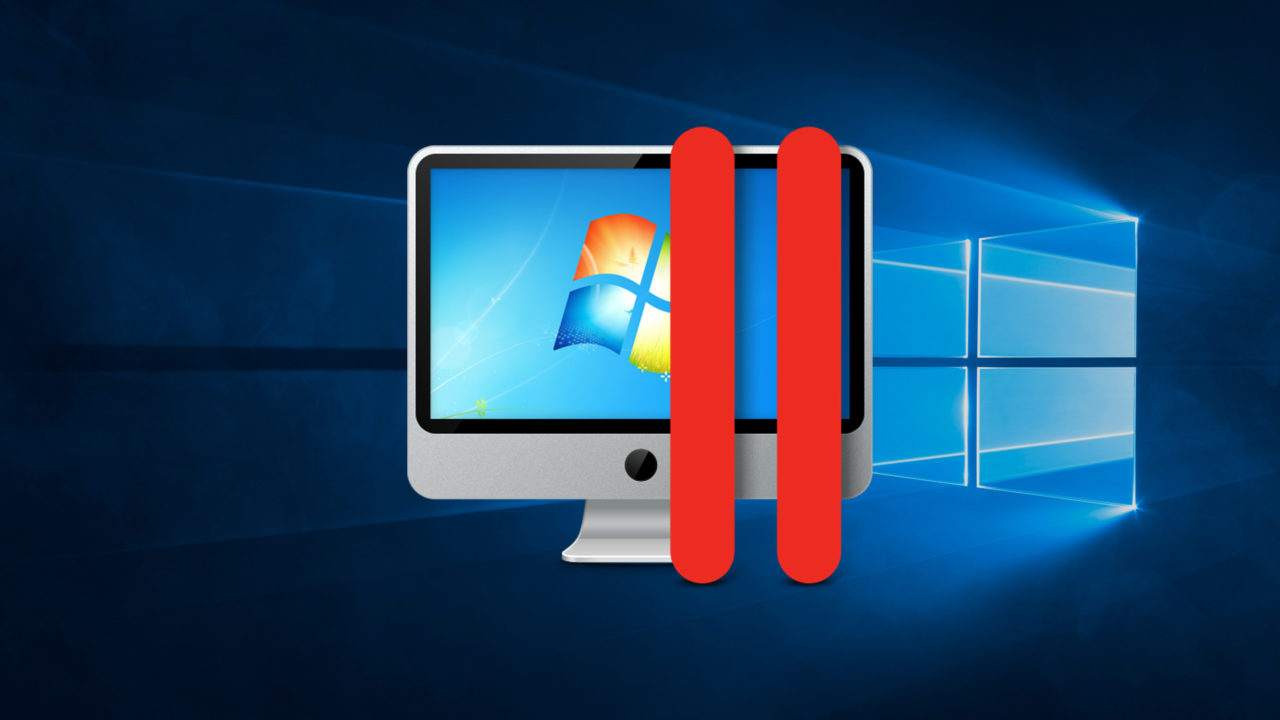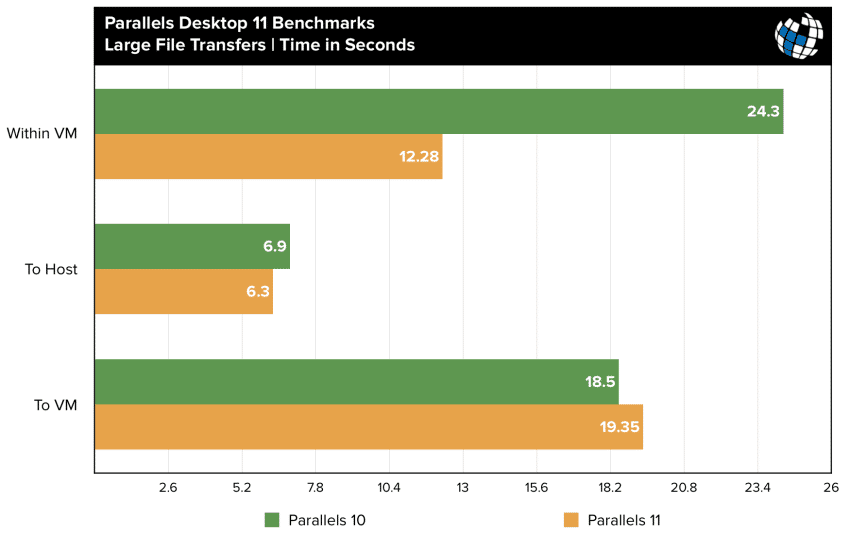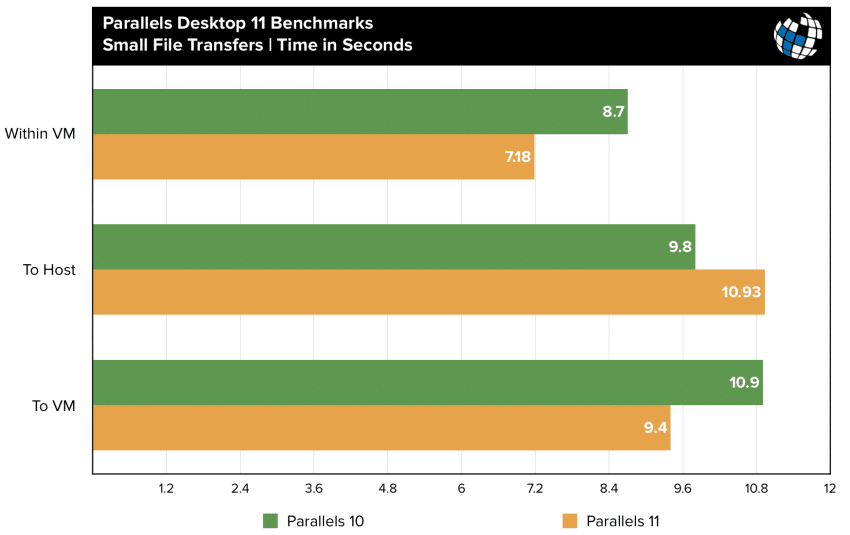Parallels 11 Benchmarks vs. Parallels 10 and Boot Camp

File Transfers
An important factor in the user experience of any virtual machine is file transfer performance. As we discovered last year, free virtualization software like VirtualBox really lags behind commercial options from Parallels and VMware when it comes to file management, and depending on your workflow, that could be a deal breaker.
This test (and the Virtual Machine Management test that follows) are a little different in that they don’t include Boot Camp performance. This is because we’ll be testing copying files between the VM and the host operating system, and that activity has no equivalent for a native Windows installation.
Our file tests are divided into two groups: a large file transfer (a 4GB Windows 10 installation ISO) and a small file transfer (4,096 4KB files). The numbers in the chart represent the time in seconds that it took for each transfer, with lower numbers equaling faster performance. Note that unlike our standard tests that rely on computer-generated results, these tests were measured manually with a stopwatch. As a result, we performed each test five times instead of the usual three iterations, in order to minimize the impact of human error. Also note that we performed a complete restart in between each test to avoid any operating system caching that could artificially improve the times.
For these file transfer tests, “Within VM” indicates a file transfer from one location of the virtual machine’s virtual drive to another (i.e., from the Windows 10 Downloads folder to the Windows 10 Desktop). Similarly, “To Host” is a file transfer in which a file is copied from the virtual machine to the OS X host, and “To VM” is, you guessed it, copying a file from the OS X host to the Windows 10 virtual machine.
Based on the chart above, we can see that while Parallels 10 and Parallels 11 are roughly equivalent in to/from host transfers, Parallels 11 is significantly better at transferring large files within itself. This is important for any users looking to manage video or audio files, software images, or any other large files from directly in their virtual machines.
Copying one large sequential file is one thing, but what about throwing thousands of tiny files at the system, each of which must be individually processed? Here, Parallels 10 and Parallels 11 trade blows, with Parallels 10 securing a victory by a second or so in two of the three tests. The important takeaway here, however, is that both Parallels 10 and Parallels 11 handled the task quite well, but it’s another knock against Parallels 11 on the performance front that it can’t beat its year-old predecessor.
Table of Contents
[one_half padding=”0 5px 20px 0″]
1. Introduction
2. Parallels 11 Feature Overview
3. Hardware, Software, and Testing Methodology
4. Geekbench
5. 3DMark (2013)
6. 3DMark06
7. Cinebench R15
[/one_half]
[one_half_last padding=”0 0px 20px 5px”]
8. PCMark 8
9. Passmark PerformanceTest 8.0
10. x264 Encoding
11. x265 Encoding
12. File Transfers
13. Virtual Machine Management
14. Conclusions
[/one_half_last]




















8 thoughts on “Parallels 11 Benchmarks vs. Parallels 10 and Boot Camp”
I have bought a Macbook Pro (i7, 16 GB, 500 GB) and have got a Parallels free. I want to use MS Visio and Project which only run on Windows. I wanted to check if there would be considerable difference in performance if i were to use in MS Visio and Project on Parallels, instead of using Boot Camp?
Also, i am planning to buy the Office 2016. Should i be buying the Mac Version or the Windows version (that has Access and a couple of other softwares at the same price ) and run it on Parallels?
Much appreciate your guidance.
Also from 7/8 to 11 Pro: https://buy.parallels.com/329/purl-pd11pro8u1ysub?x-source=ipn_pd8&x-campaign=pd11launch&utm_source=pd8&utm_medium=ipn&utm_campaign=pd11launch
Comments are closed.